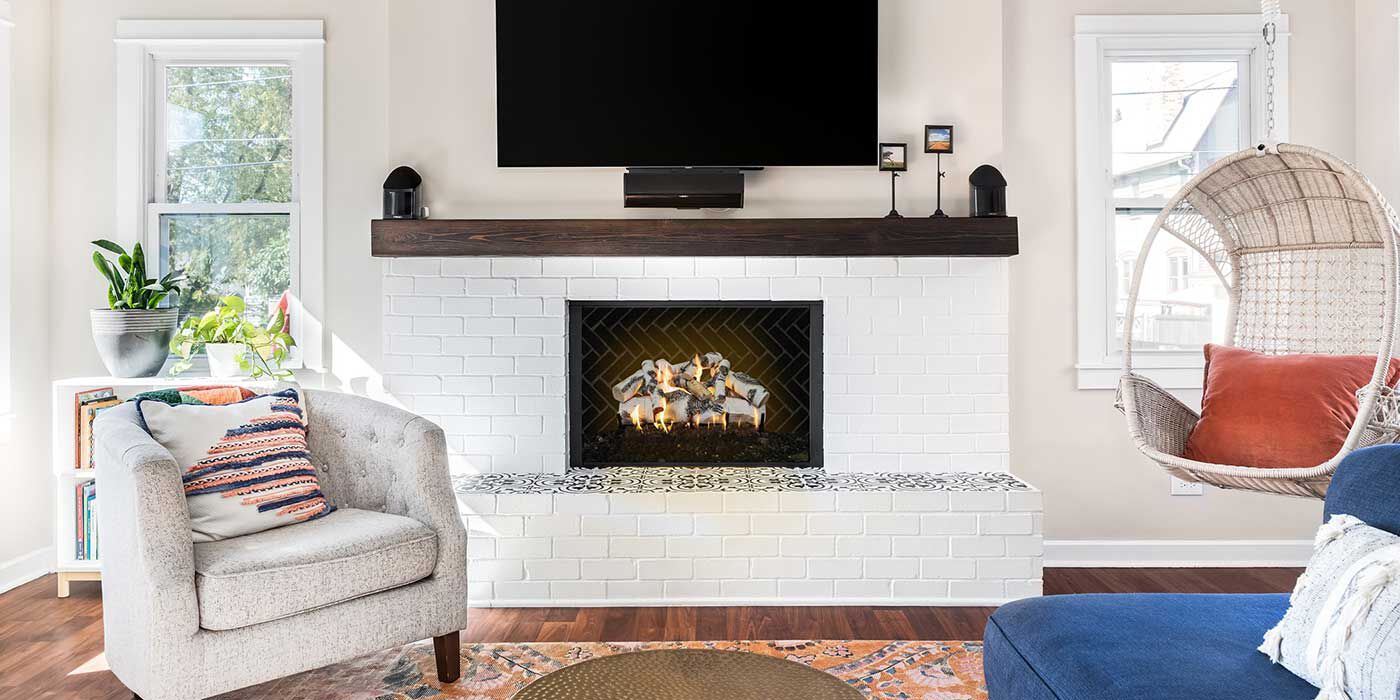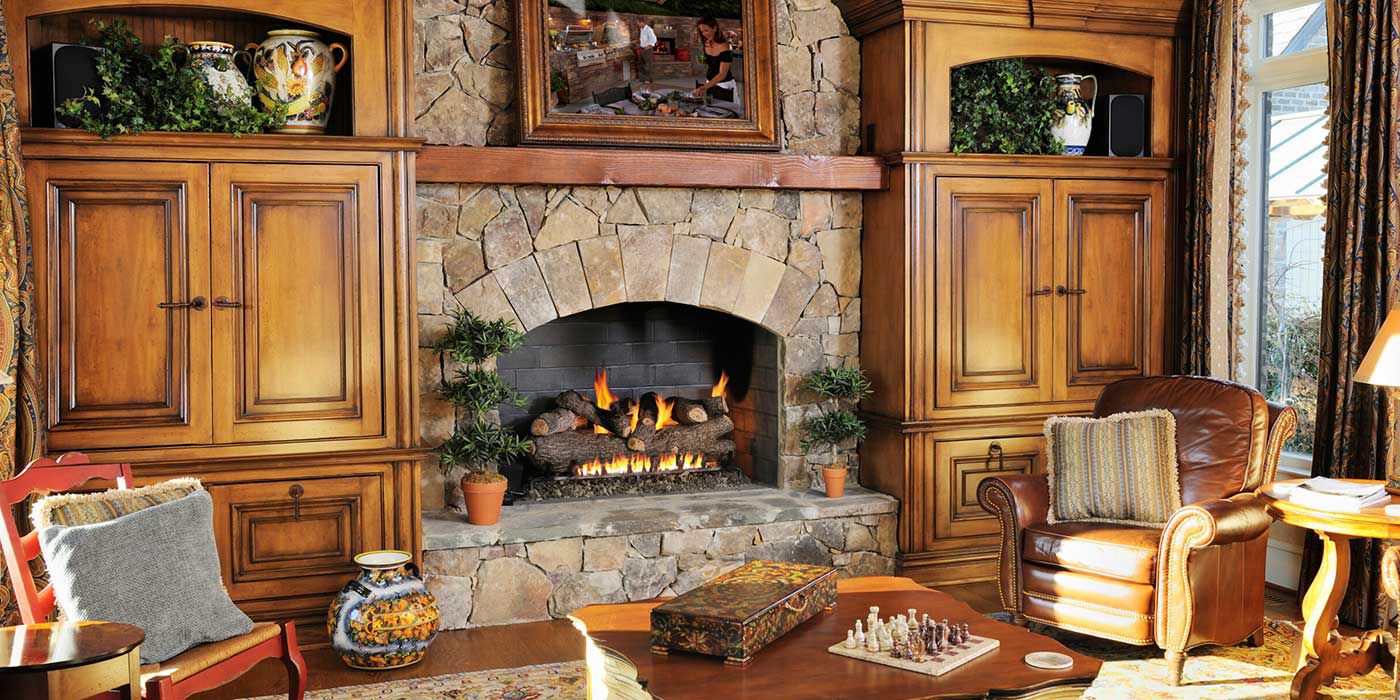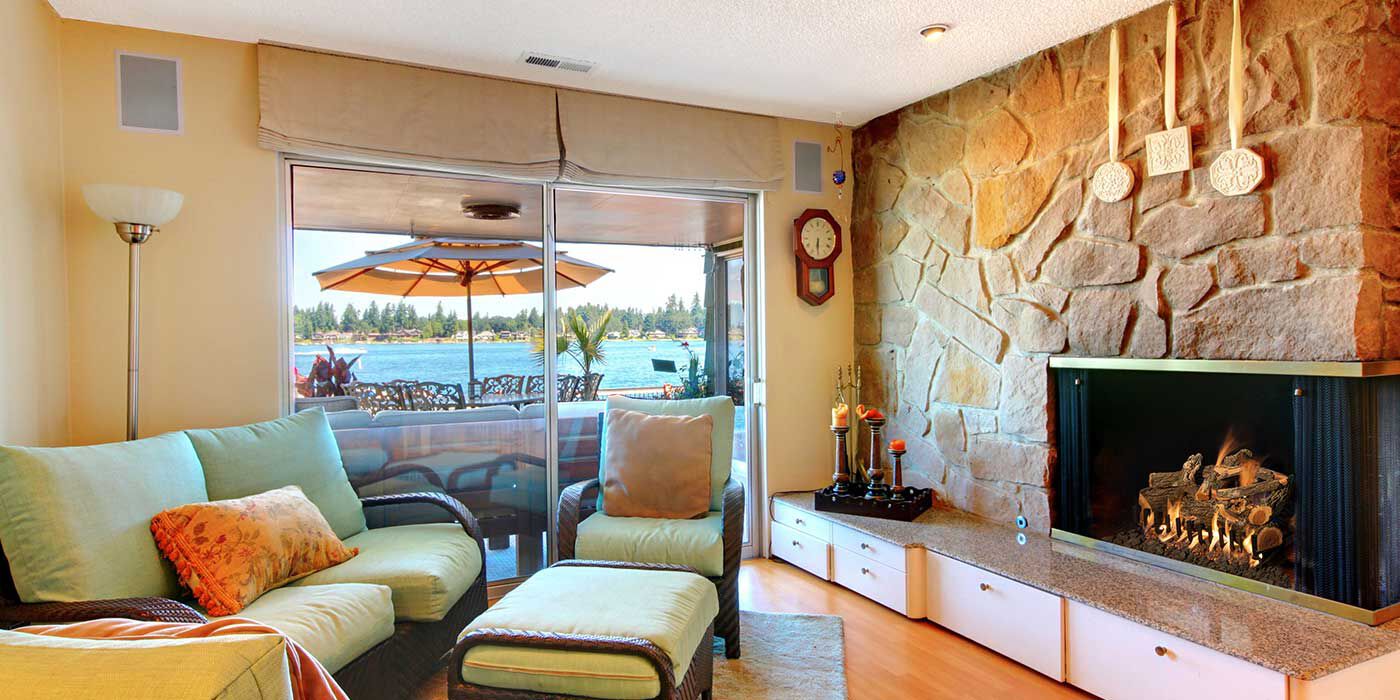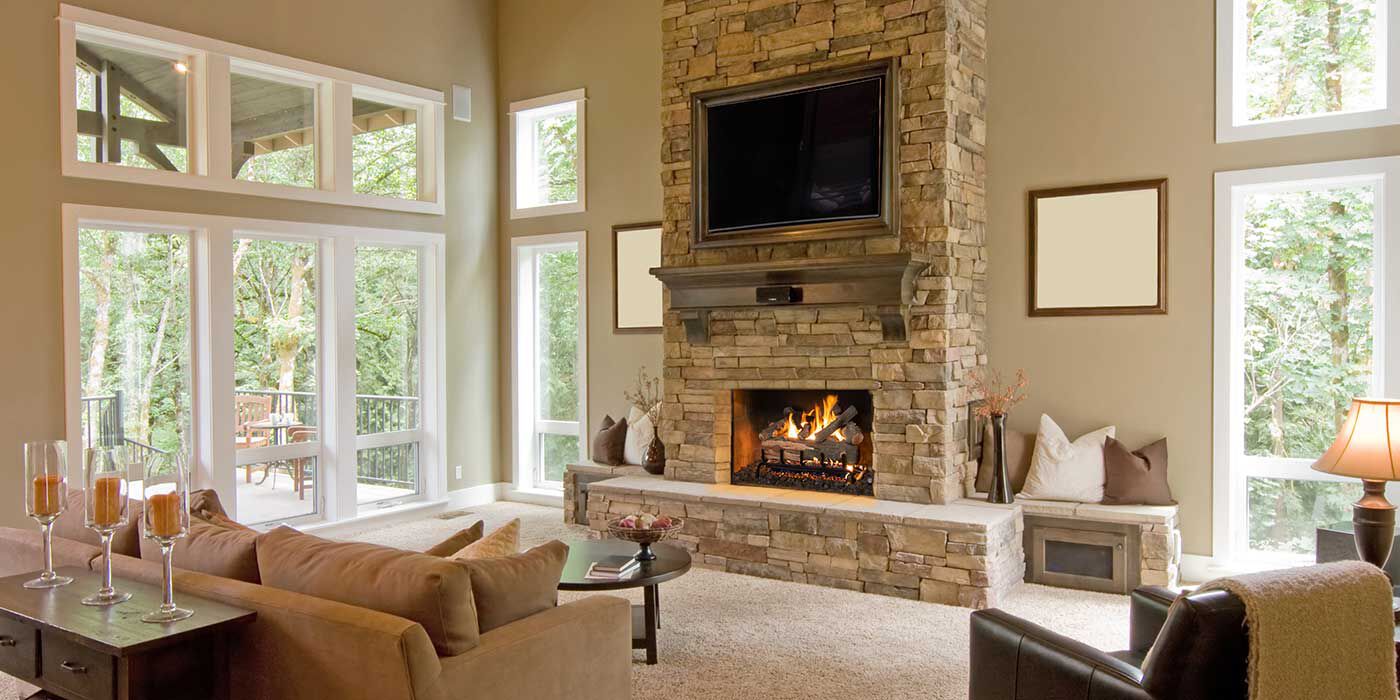By: Tom Regis, NFI Certified Master Hearth Professional
Last Updated: October 9, 2025
Gas logs are a popular and convenient way to enjoy the warmth and ambiance of a fireplace, without the hassle of building and tending to a traditional wood burning fire.
They come in various styles and types, offering an easy-to-maintain alternative that can fit into almost any home. However, many homeowners have questions about gas fireplace logs before making the switch.
In this article, we’ll address the most common questions about gas logs to help you make an informed decision.
In This Article
- Can I convert my wood burning fireplace to a gas log set?
- What are gas logs made of?
- What’s the difference between Vented and Ventless gas logs?
- What type of maintenance or service does a gas log set need?
- Do gas logs smell when they burn?
- Do propane gas log sets need a safety pilot?
- Can I use a propane log set if my home has a natural gas line?
- Can I add a remote-control system to my gas log set after installation?
- How do I know what size gas logs to buy?
- What’s the best way to light my gas log set?
#1: Can I Convert My Wood Burning Fireplace to a Gas Log Set?
In most cases, you can install a Vented or Ventless gas log set in a fully functioning wood burning fireplace.
However, some scenarios do not allow for a gas log system in your fireplace. For example, if your fireplace is a high-efficient wood burning unit, you cannot install a gas log set.
Be sure to check the installation requirements for your specific log set, outlined in the owner's manual. You'll also need to hire a licensed gas professional to install a gas line and hook up your log set.
#2: What Are Gas Logs Made Of?
Most gas logs are ceramic fiber, or a refractory cement mixture designed to withstand high temperatures. Some log sets also have steel reinforcement bars added to the inside, which prevents them from bending or cracking under extreme heat.
Ceramic logs may change color slightly with extended use. Refractory cement logs will retain their color and details for much longer.
#3: What Is the Difference Between Vented and Ventless Logs?
There are two types of gas logs — Vented and Ventless (Vent-Free). If you're looking for full, authentic-looking flames, a Vented gas log set is the best choice. For reliable and efficient heating, consider a Ventless set.
Vented logs are the perfect replacement for real wood logs with incredibly realistic designs and tall, golden flames. You can install your Vented log set in an existing wood fireplace with a fully functional chimney, flue, and damper.
Keep in mind that the chimney damper needs to stay open to prevent the buildup of combustion byproducts. Almost all the heat escapes through the chimney, making your Vented log set less efficient at warming your home than Ventless sets.
While they appear less realistic than Vented sets, Ventless logs achieve clean, smokeless flames and don't require the use of a chimney or venting system of any kind. All the heat created circulates back into your home, creating incredible supplemental heating.
You can learn more about Vented and Ventless gas logs here or check out our Gas Log Buying Guide.
#4: What Type of Maintenance or Service Does a Gas Log Set Need?
It's essential to hire a licensed hearth professional to inspect your fireplace, gas log set, and burner system annually. They'll be able to check out the valves, pipes, and gas connections to ensure they're working smoothly.
For Ventless gas log sets, you'll also need to clean your ember bed and logs every few weeks to remove any soot buildup.
For Vented log sets, have your chimney inspected and swept once a year. Like Ventless sets, Vented logs require thorough cleaning every few weeks, especially if you use liquid propane fuel.
Please refer to our Gas Log Maintenance Guide for how to properly disassemble, clean, and reassemble your log set.
Over time, you may need to replace some parts on your log set. A professional will be able to determine the right components and swap them out successfully.
Read more about the advantages of gas logs here.
#5: Do Gas Logs Smell When They Burn?
Some gas logs may release an odor and possibly some smoke during their initial burn. If your fireplace is Vented, the odor will escape up the chimney and may not be very noticeable.
We recommend venting your Ventless gas log set during the initial burn period. This will help remove any odors and smoke it produces. After the first burn, they may continue to emit a slight scent during use.
#6: Do Propane Gas Log Sets Need a Safety Pilot?
Yes, a safety pilot will eliminate the potential risk of Propane gas pooling in your fireplace if you ever have a gas leak.
Since Propane is heavier than air, it settles at the bottom of the firebox, rather than escaping through the chimney. A Propane gas leak is easy to overlook. If enough gas pools up, you could face a dangerous fire hazard.
The safety pilot ensures gas cannot pass through the burner when it's not in use, eliminating the risk of gas buildup.
#7: Our New House Has Natural Gas; Can We Still Use the Propane Log Set We Used in Our Old House?
This will depend entirely on the type of log set you have. You can convert some Vented gas log sets from Propane to Natural Gas, but you cannot convert Ventless log sets.
Consider using a gas conversion kit to transform your Vented Propane log set into a Natural Gas unit. Make sure the conversion kit you purchase has been approved by the manufacturer to ensure a safe installation.
Pro Tip:
When you purchase a gas log set, the warranty is only valid for the original owner and original fireplace the log set was installed in.
#8: Can I Add a Remote-Control System to My Gas Log Set After Installation?
Yes, you can add a remote control to your gas log set after installation if it has a millivolt valve. You can even convert your log set to a remote-control system with variable flame and thermostatic controls.
#9: How Do I Know What Size Gas Logs to Buy?
You’ll need to measure the firebox to determine what size gas log set will fit properly.
Simply measure the front width, rear width, depth, and height of the firebox to find the correct dimensions.
Always check the manufacturer's sizing requirements and clearance to combustibles to ensure you get the proper size logs.
If your logs are the wrong size, your firebox and gas valves can overheat, causing permanent damage to your log set, fireplace, or home.
If you need help with this step or would like to get an expert opinion, call our NFI Certified Master Hearth Professionals at 800.919.1904. They’ll walk you through the process step-by-step!
#10: What Is the Difference Between a Manual Valve and Manual Safety Pilot Ignition?
Match-lit ignition systems use manual valves, or key valves. Manual valves can be outside the firebox or installed as an inline shutoff valve on the inside of the firebox.
A manual safety pilot ignition is a gas valve that incorporates a safety system with a flame-sensing thermocouple. The safety pilot stays lit, so you can turn the control knob to light the fire. If the flame ever goes out, the safety system will shut off the gas, keeping you and your home protected.
We're Here to Help
Do you have more questions for us? Contact our NFI Certified specialists at 800.919.1904 today!
More Resources
Want to know more about gas logs? Read our Gas Log Buying Guide to find out everything you need to know.
Check out our top 6 reasons why gas logs are a great alternative to wood burning fireplaces.
Find out if a Vented or Ventless Log Set is right for you.
 |
Thomas Regis has been a Technical Sales Representative at Woodland Direct for four years. An NFI-Certified expert, Thomas effortlessly directs his clients toward the perfect products, offering essential installation and safety advice. He's tackled projects of all sizes, from backyard fire pits to custom indoor fireplaces. He has even helped Amy Adams, owner of the Tennessee Titans, find a new fireplace for her home! Beyond his professional achievements, Thomas actively participates in community service projects and enjoys spending time on the basketball court. Call him or one of our experts in fire at 800.919.1904. |



